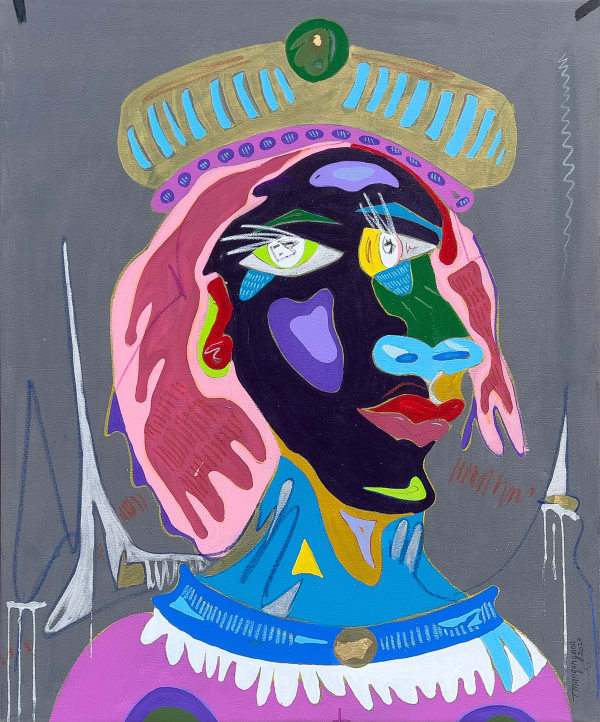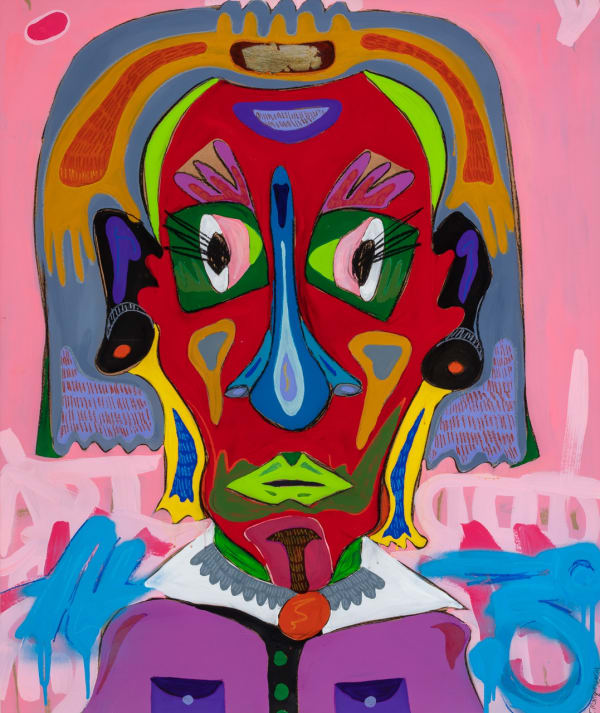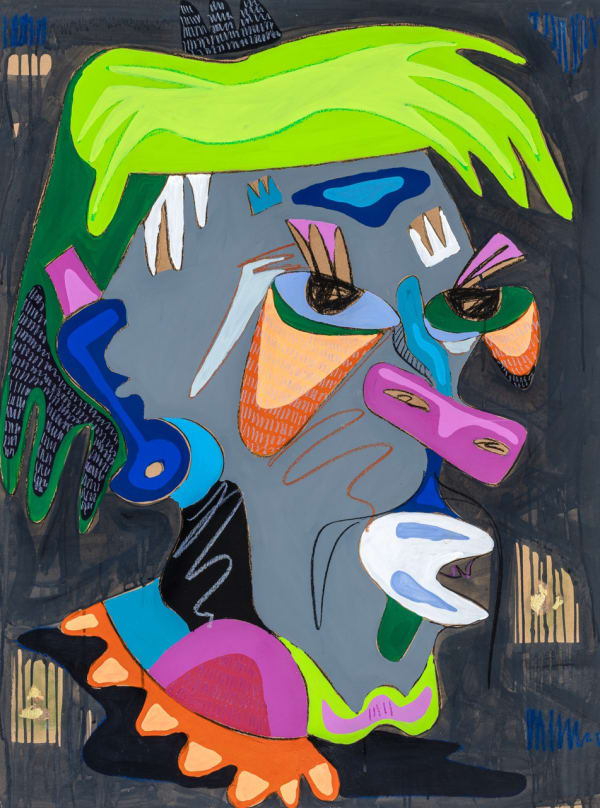Ethnic Riddles, Thembalethu Manqunyana's first-ever exhibition in the UK, opens at Thompson's Gallery London on 17 May. Here, Manqunyana gives an exclusive interview reflecting on the show's development and his own artistic journey.
Q&A WITH Thembalethu Manqunyana
Thompson's Gallery: "Please walk us through your thoughts on this body of work, and how you have been preparing for it across the year?"
Thembalethu Manqunyana: "This show like any other artistic journey I encounter takes refuge on issues relating to ethnic identities and their purported boundaries. I try to imagine a different view point on this subject instead of the existing one…also because my artistic journey is informed by my tribal background of IsiXhosa. My responsibility as an artist is to take the functional image of this ethnic group beyond its margins…maybe towards broader interpretations of its realities visually and culturally. AmaXhosa are a Nguni ethnic group whose traditional homeland is the Cape Province of South Africa. We are the second largest ethnic group in Southern Africa and we are native speakers of IsiXhosa language. And because my creativity is informed by the ethnic realities of this particular group that have profound existence in the rural Eastern Cape of South Africa where my origins are rooted. Besides, my ancestral homestead still stands tall in Peddie where I have been visiting temporarily during the course of build-up for this show, and in order to come to terms with the unique IsiXhosa atmosphere while I reside and work permanently in urban Cape Town…this in some way allows me to deal with the variations of rural and urban IsiXhosa collage that make up its modern situation; the assemblages of the images I create in my work are embedded in these ethnic realities. I have also been speaking to certain individuals from both; urban and rural backgrounds with profound IsiXhosa knowledge while gatherings information of all sorts in this regard, these unique stories have shaped the primary vision of this show."
TG: How would you describe your work to someone who hasn’t seen it before?
TM: My work is an illustrative journal that is informed by my ethnic background because my work also happens to interpret my visions, my ideas and the human condition in both; urban and rural situations of South Africa where there is a significant inequality culturally, socially and economically. The existence of inconsistency in a disturbing consistency…gradually developing a subject-matter that consist of groupings rather that insisting on meek portrait images of the individual in my work. Although the portraits themselves can suggest groupings because of the fragments and assemblages of colour and images that encompass the individual. The different colours that I employ to construct these individual portraitures are reminiscent of many things that are African and not only signify the IsiXhosa background…these colour fragments are proposing a grouping within the individual and beyond ethnic artificial margins…constantly proposing relationships beyond South Africa. The above statement also proposes a visual dialogue that is carried out by means of disjointed and assembled images to mark the growth that also instigates a departure from established identities. My work proposes an association between the historical and present by means of visual language and image. These variation of colours and images are meant to signify the inequalities and differences from a South African idiom and towards a universal palette. I am currently putting more emphasis on fusing ethnic symbols…sometimes these images are inspired by West African masks through multiplications of colours and imagery. These multiplication of colours attempt to articulate arrangements of character by undermining racist and ethnic tendencies around issues of identities in portraiture. My art celebrates that lack of particular ethnic and racial appeal that constantly define identities in my portraits.
TG: Who has been the biggest influence in your art career?
TM: The vigorous navigations for a voice going back and forth is about spending time listening and looking at what other people say or do…particularly modern artists. For instance, I have later took more interest on how artists like Jean-Michel Basquat and Blessing Ngobeni have narrowed the boundaries, painting outside of particular art schools as you cannot really pin them down to neither Neo-Expressionism or Cubism. These are the kind of artists that have led me into attempting to break free from everything while relating to all the above through my own devices in approach and interpretations. Although these above mentioned artists have been influential in my growth and in search for an individual voice…my major influence still comes from various ethnic and cultural identities and music and the different sounds of dialects from Africa.
***
Ethnic Riddles will be on view from 17 May - 3 June 2023 at Thompson's Gallery London. Click here to view the entire exhibition online. For more information, please contact the gallery.
April 29, 2023






